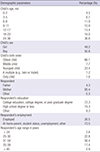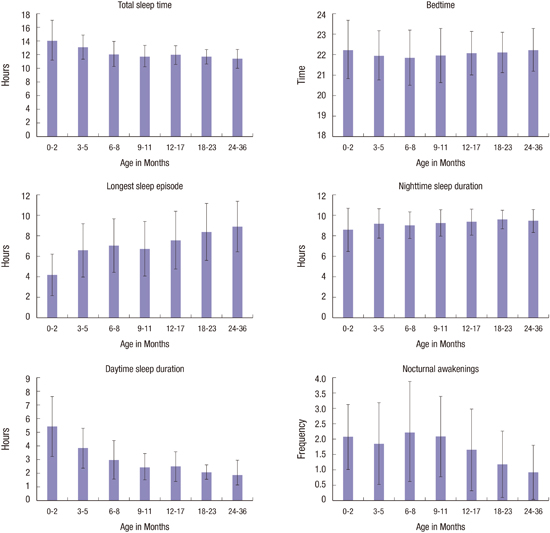1. Mindell JA, Sadeh A, Kohyama J, How TH. Parental behaviors and sleep outcomes in infants and toddlers: a cross-cultural comparison. Sleep Med. 2010; 11:393–399.
2. Mindell JA, Sadeh A, Wiegand B, How TH, Goh DY. Cross-cultural differences in infant and toddler sleep. Sleep Med. 2010; 11:274–280.
3. Teng A, Bartle A, Sadeh A, Mindell J. Infant and toddler sleep in Australia and New Zealand. J Paediatr Child Health. 2012; 48:268–273.
4. Jenni OG, O’Connor BB. Children’s sleep: an interplay between culture and biology. Pediatrics. 2005; 115:Suppl. 204–216.
5. Sadeh A, Raviv A, Gruber R. Sleep patterns and sleep disruptions in school-age children. Dev Psychol. 2000; 36:291–301.
6. Blampied NM, France KG. A behavioral model of infant sleep disturbance. J Appl Behav Anal. 1993; 26:477–492.
7. Mindell JA, Kuhn B, Lewin DS, Meltzer LJ, Sadeh A; American Academy of Sleep Medicine. Behavioral treatment of bedtime problems and night wakings in infants and young children. Sleep. 2006; 29:1263–1276.
8. Sadeh A, Tikotzky L, Scher A. Parenting and infant sleep. Sleep Med Rev. 2010; 14:89–96.
9. Beebe DW. Cognitive, behavioral, and functional consequences of inadequate sleep in children and adolescents. Pediatr Clin North Am. 2011; 58:649–665.
10. Chen X, Beydoun MA, Wang Y. Is sleep duration associated with childhood obesity? A systematic review and meta-analysis. Obesity (Silver Spring). 2008; 16:265–274.
11. Gangwisch JE, Malaspina D, Babiss LA, Opler MG, Posner K, Shen S, Turner JB, Zammit GK, Ginsberg HN. Short sleep duration as a risk factor for hypercholesterolemia: analyses of the National Longitudinal Study of Adolescent Health. Sleep. 2010; 33:956–961.
12. Gregory AM, Sadeh A. Sleep, emotional and behavioral difficulties in children and adolescents. Sleep Med Rev. 2012; 16:129–136.
13. Lee K. The crying pattern of Korean infants and related factors. Dev Med Child Neurol. 1994; 36:601–607.
14. Park HS, Lee YE. A study on the sleep/activity pattern in normal early infants using NCASA (Nursing Child Assessment Sleep/Activity Record). Korean Parent Child Health J. 2000; 3:46–59.
15. Kim MY, Koh HJ, Shin YH, Kim YH, Oh JA, Kim HY, Kim EJ, Kim YS. A study on the sleep activity pattern of the infant. Korean Parent Child Health J. 2000; 3:1–17.
16. Lee KS, Park MH, Park JA. A study on infant sleep behavior patterns and sex differences and its related variables. In : Proceedings of 2008 Annual Meeting of the Korean Psychological Association; 2008 Aug 21-22; Korea Military Academy, Seoul. Seoul: Korean Psychological Association;2008. p. 474–475.
17. Sadeh A. A brief screening questionnaire for infant sleep problems: validation and findings for an Internet sample. Pediatrics. 2004; 113:e570–7.
18. Blair PS, Humphreys JS, Gringras P, Taheri S, Scott N, Emond A, Henderson J, Fleming PJ. Childhood sleep duration and associated demographic characteristics in an english cohort. Sleep. 2012; 35:353–360.
19. Iglowstein I, Jenni OG, Molinari L, Largo RH. Sleep duration from infancy to adolescence: reference values and generational trends. Pediatrics. 2003; 111:302–307.
20. Jiang F, Shen X, Yan C, Wu S, Jin X, Dyken M, Lin-Dyken D. Epidemiological study of sleep characteristics in Chinese children 1-23 months of age. Pediatr Int. 2007; 49:811–816.
21. Quach J, Hiscock H, Ukoumunne OC, Wake M. A brief sleep intervention improves outcomes in the school entry year: a randomized controlled trial. Pediatrics. 2011; 128:692–701.
22. Meltzer LJ, Mindell JA. Sleep and sleep disorders in children and adolescents. Psychiatr Clin North Am. 2006; 29:1059–1076.
23. Sadeh A, Mindell J, Rivera L. “My child has a sleep problem”: a cross-cultural comparison of parental definitions. Sleep Med. 2011; 12:478–482.
24. Thoman EB. Co-sleeping, an ancient practice: issues of the past and present, and possibilities for the future. Sleep Med Rev. 2006; 10:407–417.









 PDF
PDF ePub
ePub Citation
Citation Print
Print





 XML Download
XML Download